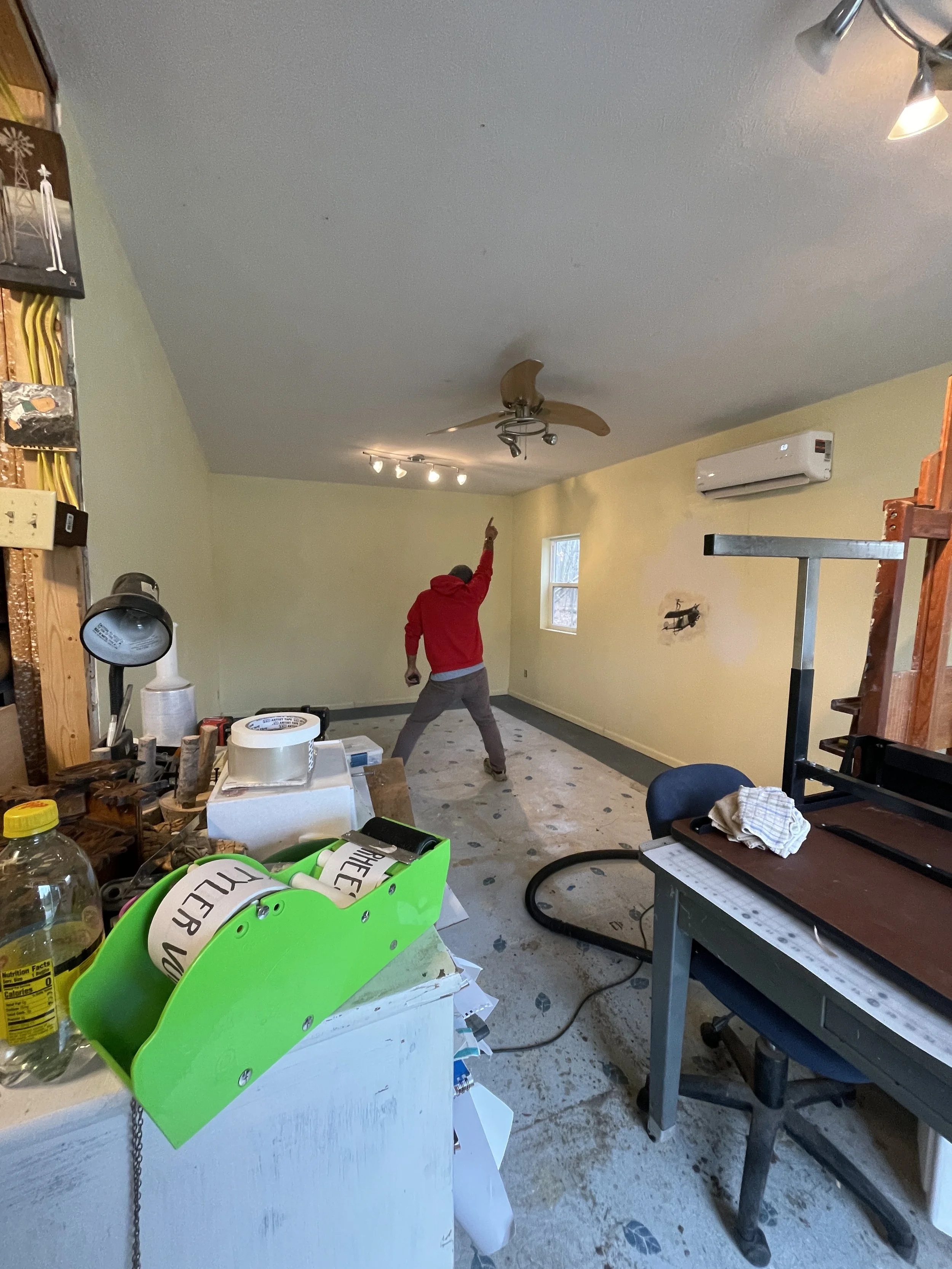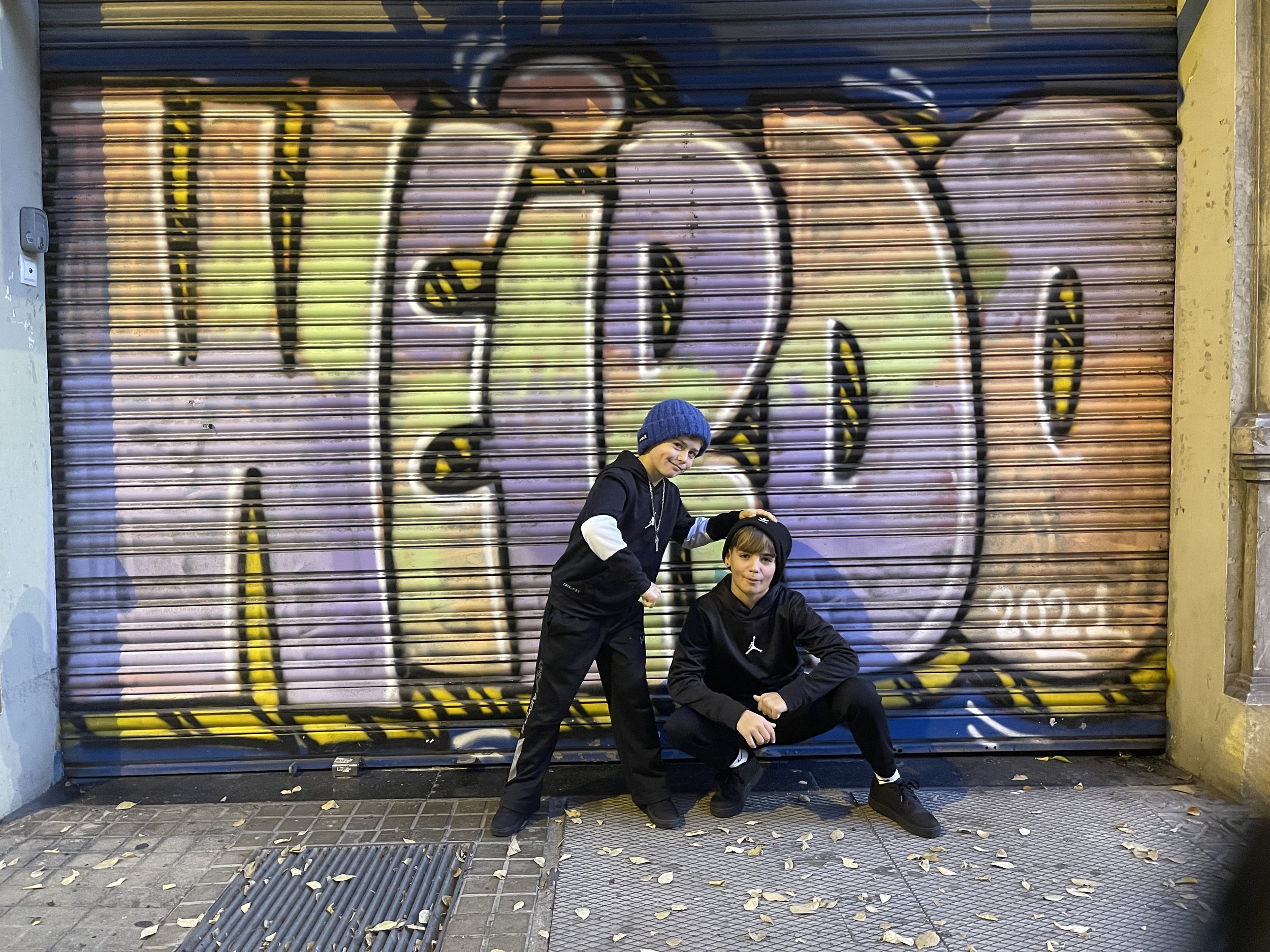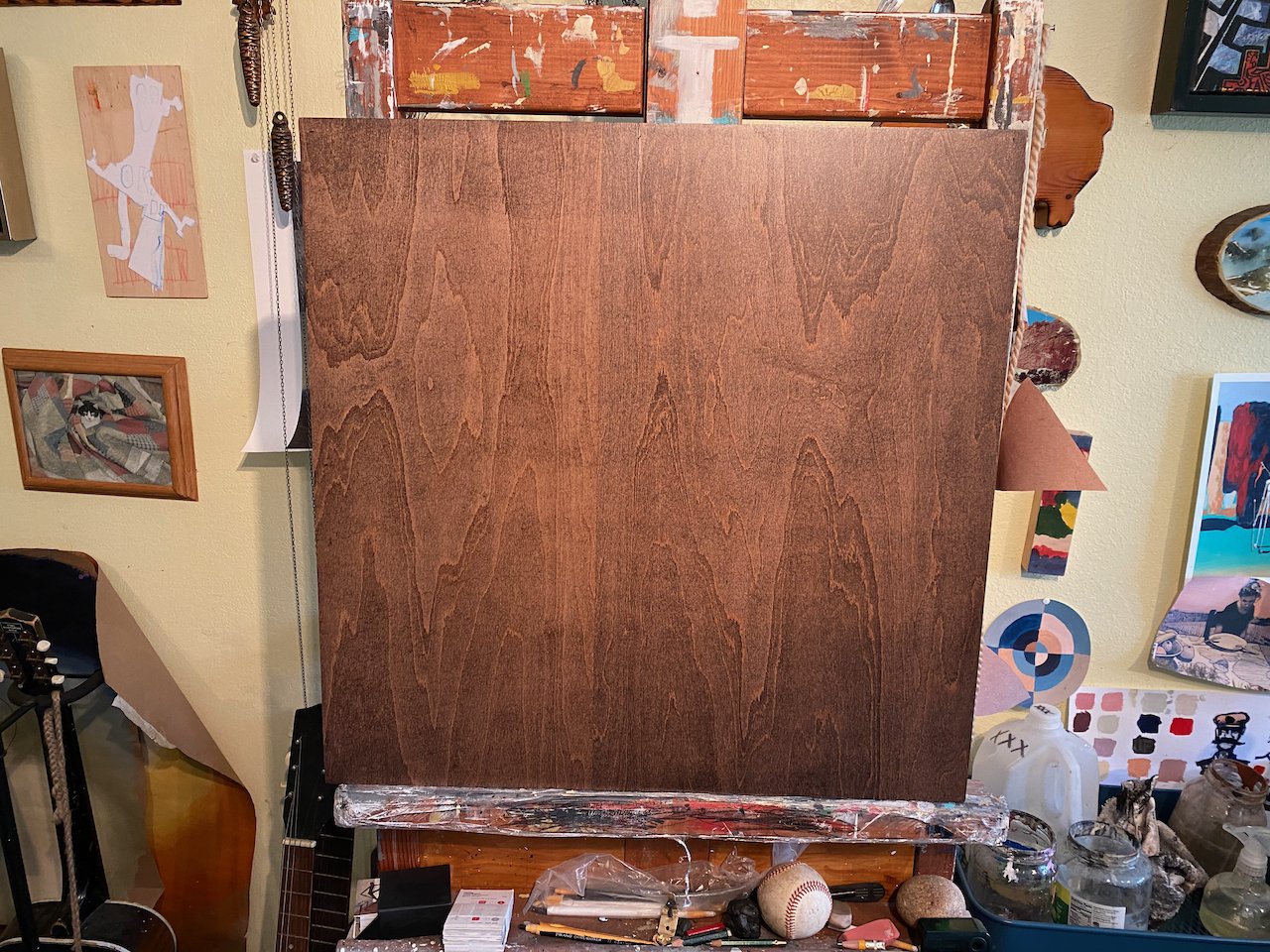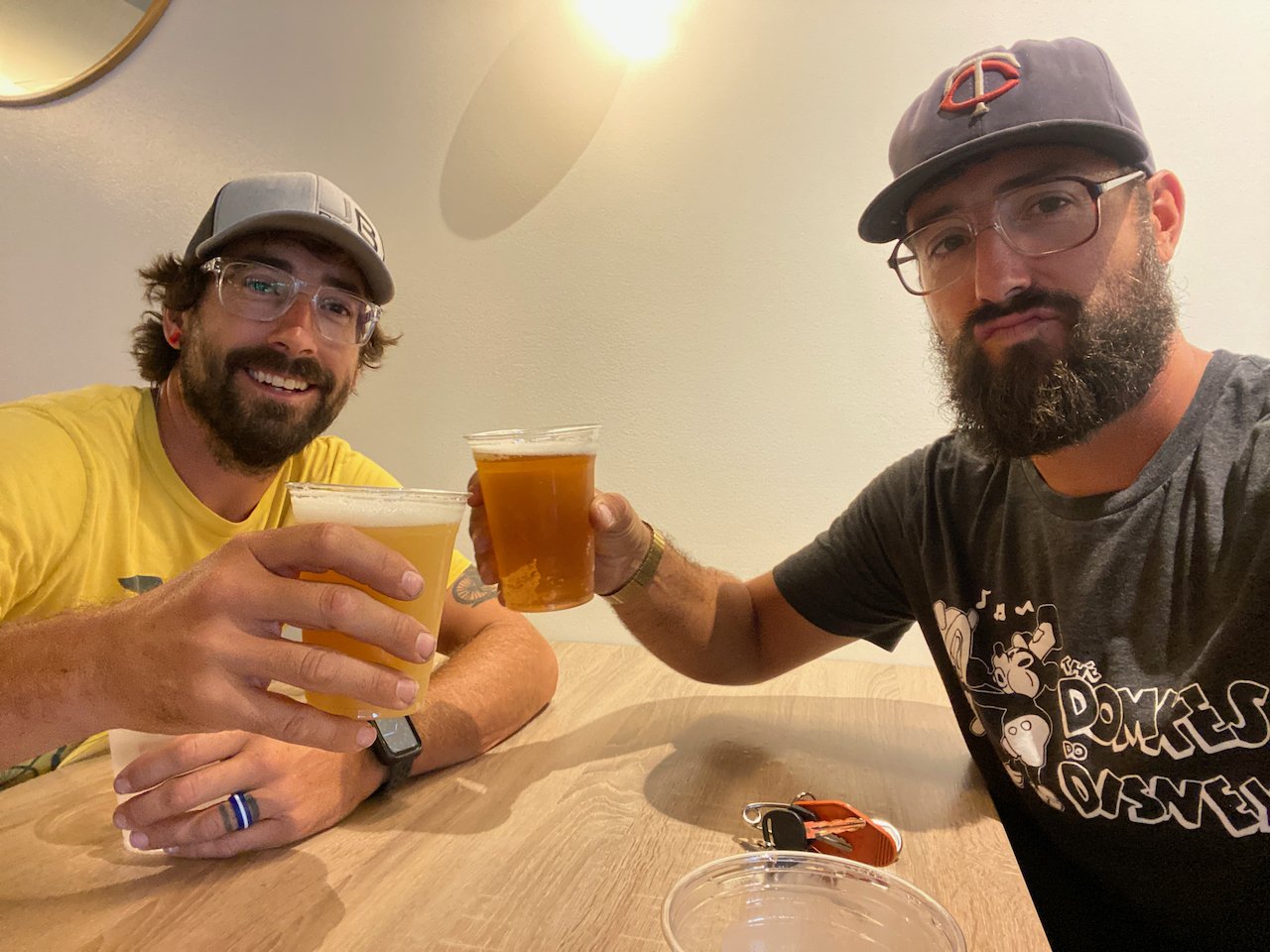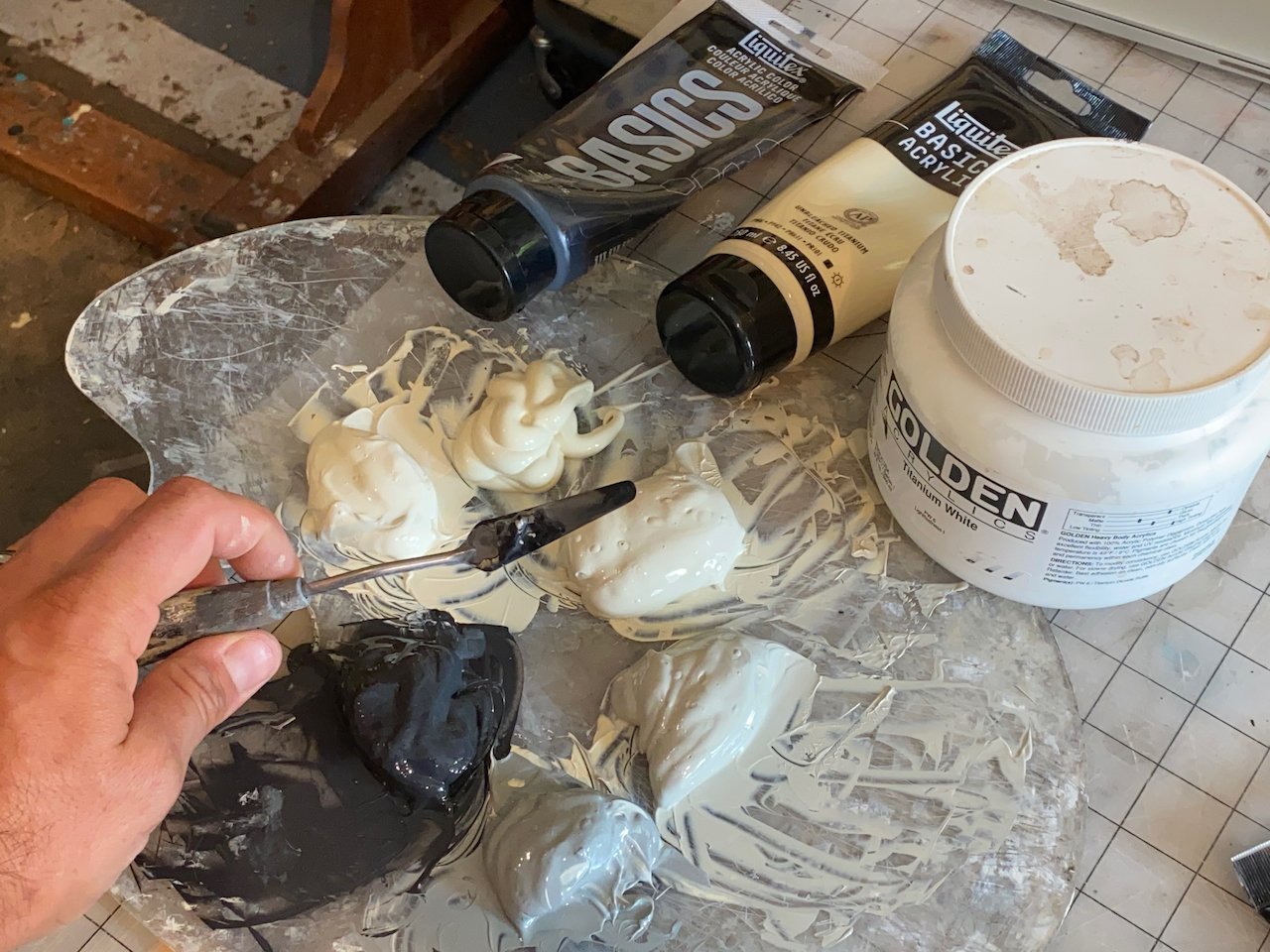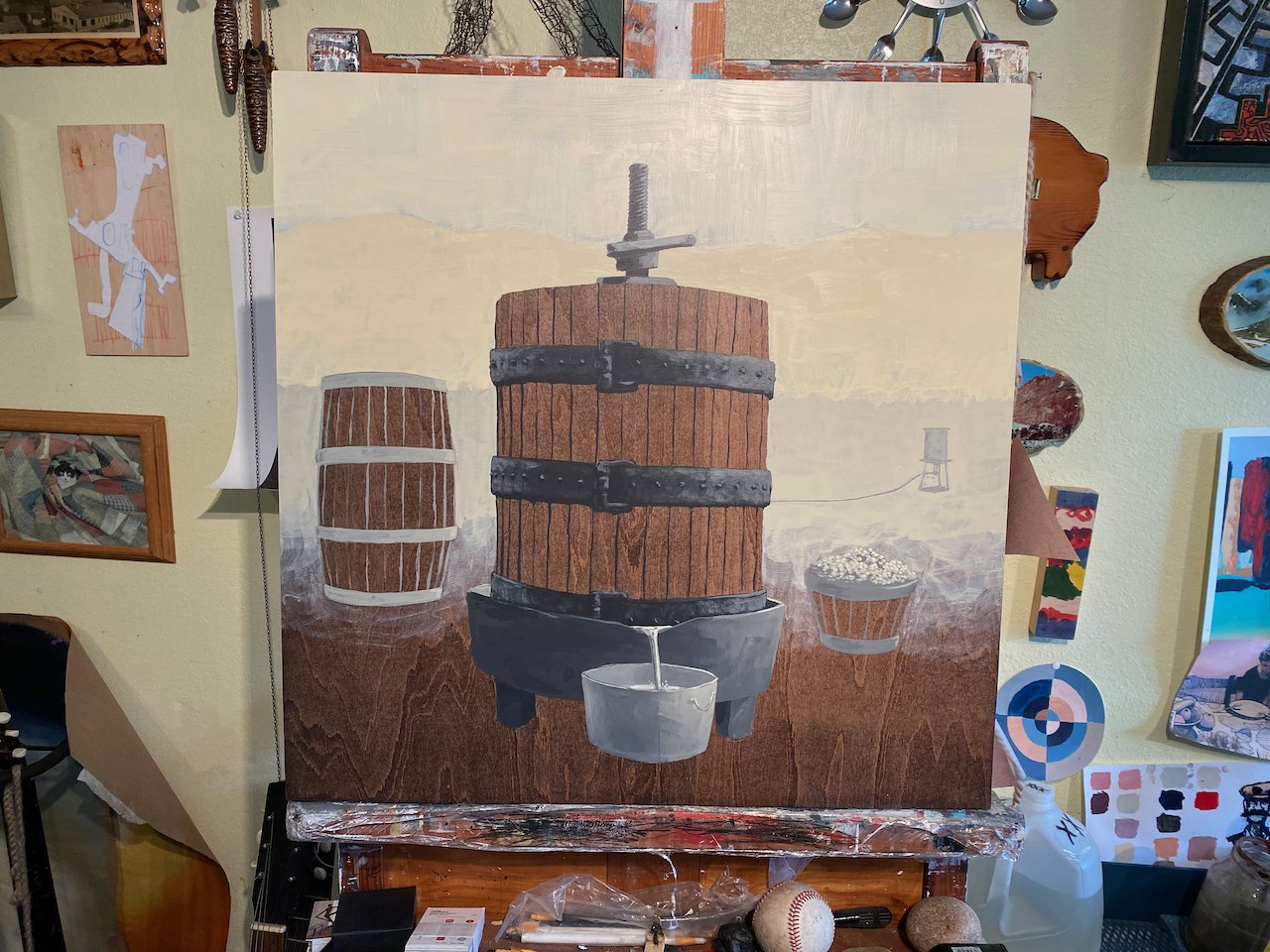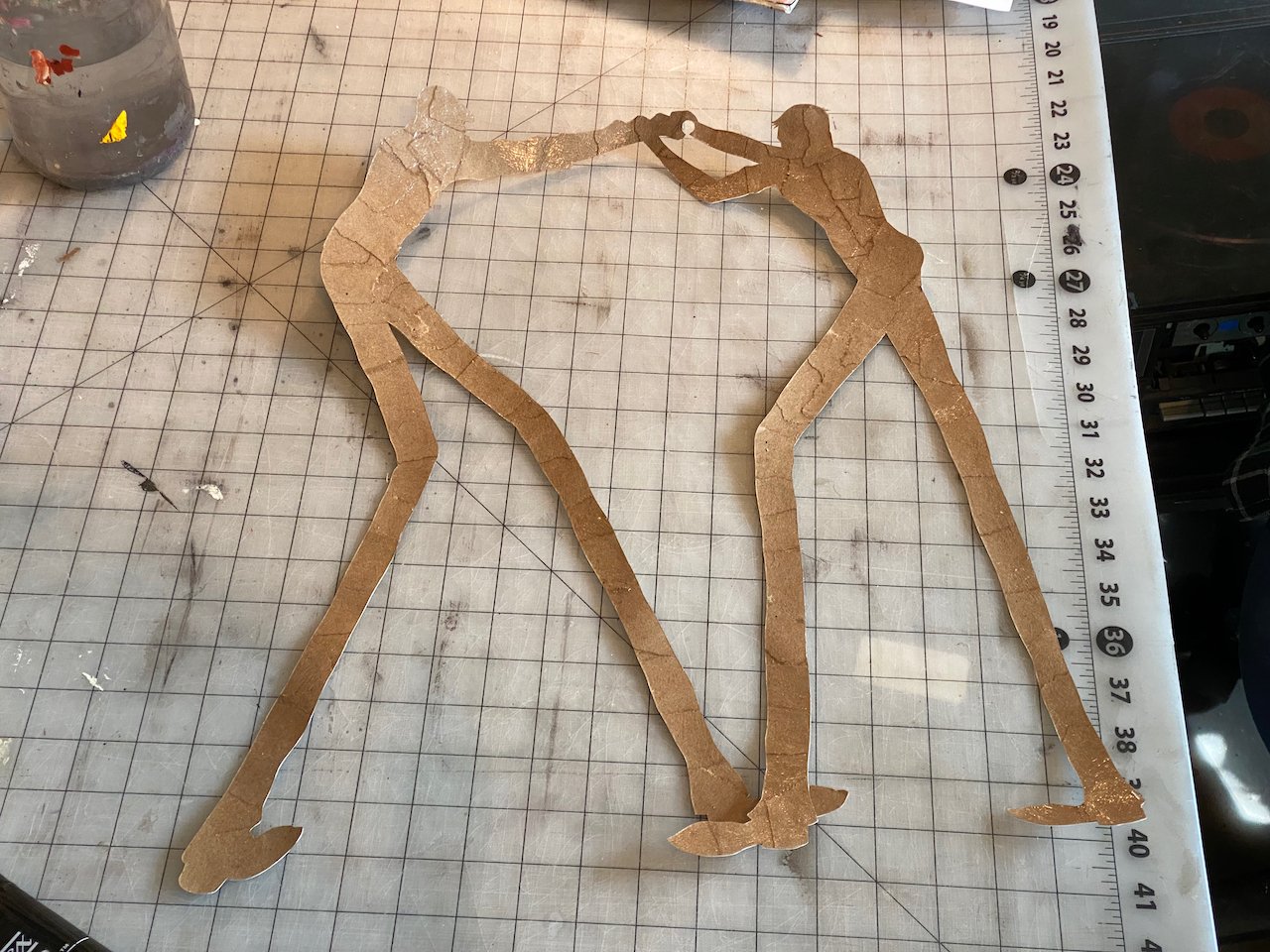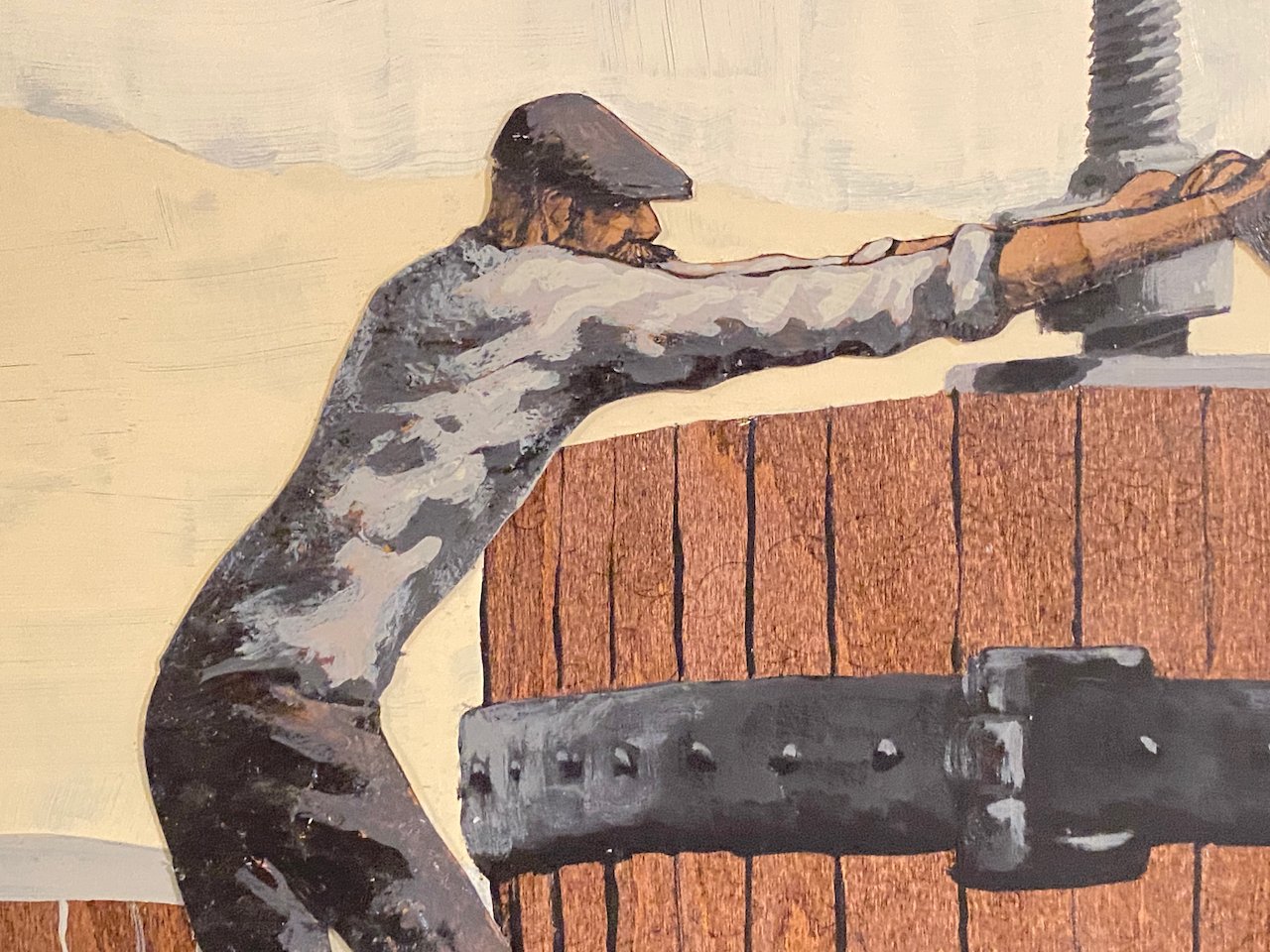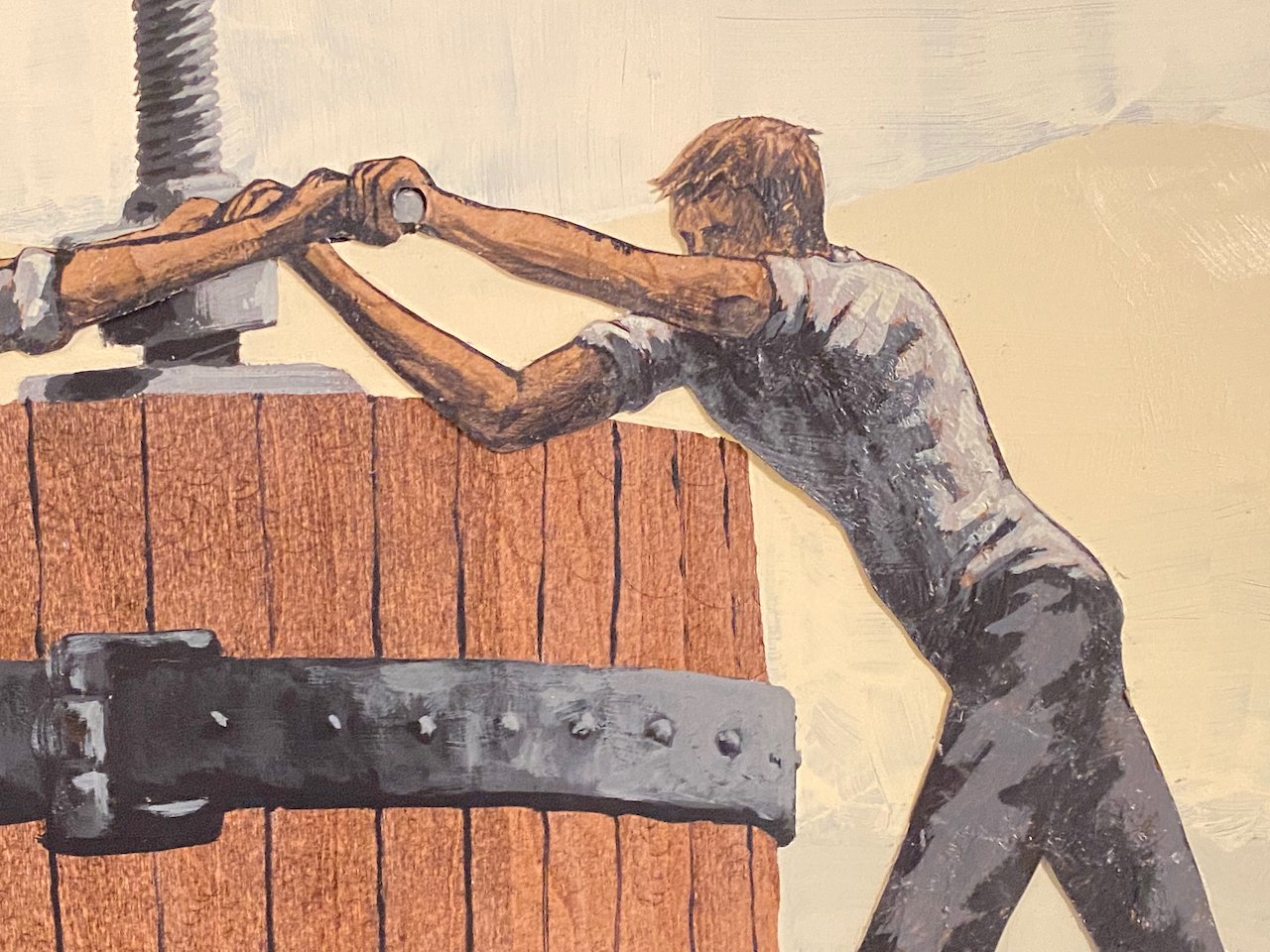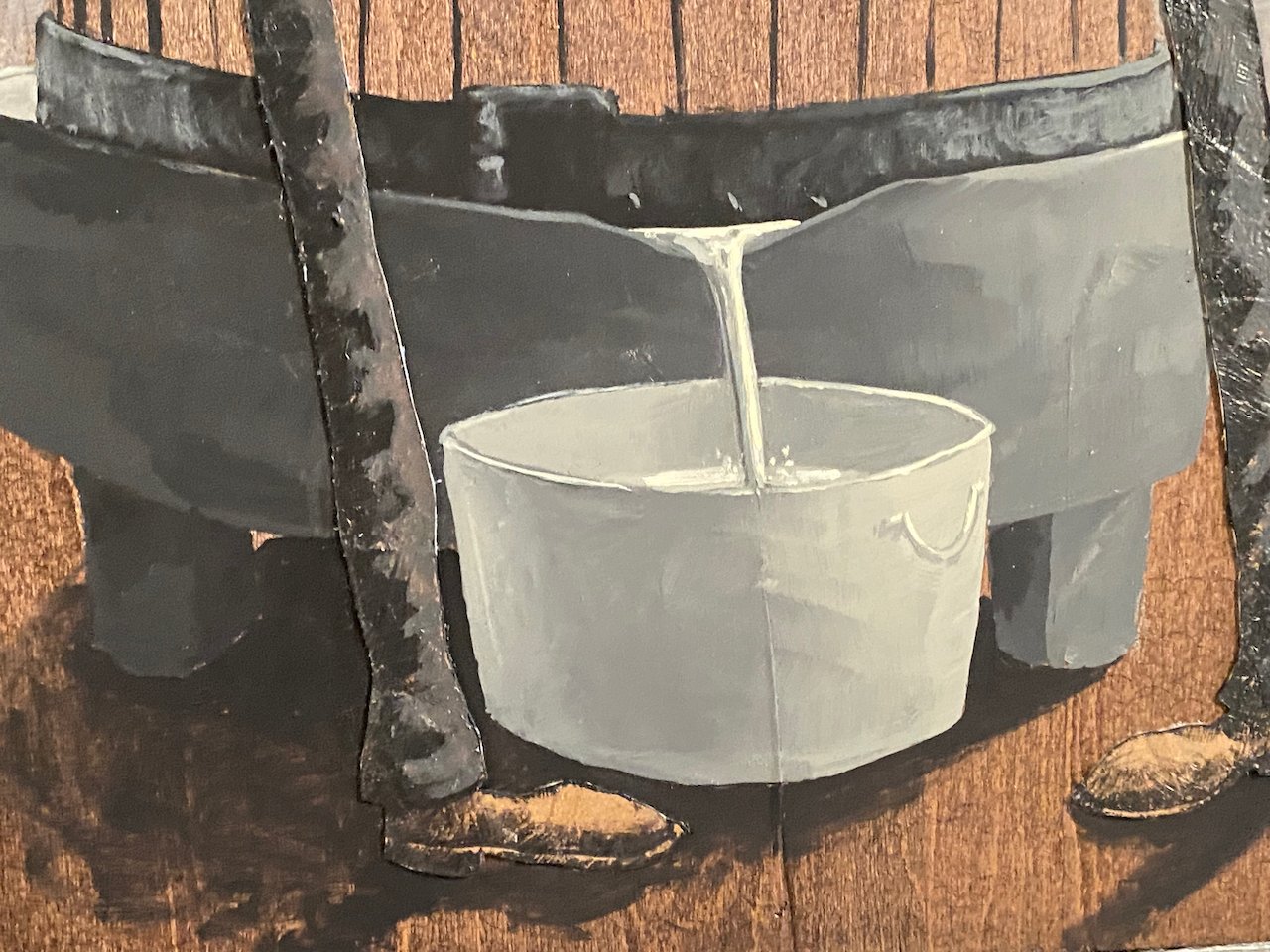A famine had hit the small Italian village hard and people were getting desperate. The hunger pangs were relentless, every scrap of food was fiercely guarded, and gaunt hollow faces wandered the streets in search of sustenance.
Read MoreThe Bookseller /
This story begins with a young man, a rug, and nine books. He spreads the rug out under the shade of a lone tree and sets the books out in a neat little display to catch the eye of passersby. A few stray cats amble up and silently lay down beside him. As people walk past, he picks a book up, begins to read it and is instantly transported to another world.
Read MoreFollowing the Crumbs /
Somewhere in the ether, some unforeseen force pointed me in the direction of a new biography about Robert Crumb, and before I even knew what happened, I had ordered it from our local bookstore (thanks for the locals’ discount, Shery!) and quickly became immersed in its pages. It is a big book, but after only a few dozen pages, I was already dreading its inevitable ending and the loss of the daily joy of reading it.
Read MoreCraving the Critique /
There were no art classes in my high school. Zero. My art education in those days relegated to the notebook margins where I drew towering long-legged cowboys lumbering over the plains of South Dakota as I half listened to Mr. Johnson recounting the Battle of Gettysburg. Later, I was one of nine graduates in the class of 2002 at Tulare High School. Go Chieftains!
Read MoreLas Caras de Mogarraz (The Faces of Mogarraz) /
As we passed by doorways framed in ancient timbers, faces began to peer at us from all angles. Villagers, both past and present, loomed above us, their heads immense and unmoving, their eyes seeming to follow our every boisterous step in the morning silence. We were being watched.
Read MoreThe Knitter Mural /
When I start writing about these mural projects, my mind always goes directly to the people behind the project. In this case, it’s Liz and Brad Hilton. We met them on the streets of Grand Haven at an art festival years ago and effortlessly connected. They found a Deep Sea Diver original painting to take home and, as I wrapped it up, they started wondering aloud about the possibility of a mural in their workspace. “I like the way you think,” I replied with a smirk.
Read MoreWrap It Up, 2024 /
Paintings created: 73
Paintings that found new homes: 67 (we kept one for ourselves)
Murals painted: 2
Sculptures sold: 1
Festivals participated in: 17
Festivals canceled due to not having even close to enough work: 1
Times that has happened before: 0
States visited: 9
Studios renovated: 1
Studio renovation projects not quite completed: 1
Nights spent in the camper: 56
Nights spent in hotels: 4
Nights spent in Airbnbs: 8
Days spent with puking kids in the camper: 2
Set of tire spikes carefully driven over backwards because the campground gate was closed: 1
Tires popped: 0
Prayers involved in that process: 47
Times proud parents took the kids climbing with ropes: 1
Children who cried while climbing: 2
New schools attended by our children: 2
Alamos visited: the 1 and only
Trips to Spain in progress: 1 (oh yeah!)
Time is weird. On one hand, I look back at the year and think, “Damn, that’s a full year! We sure did a lot.” And then the next thought is, “Wait, that was this year?!”
One minute, I’m looking at pics of our kids when they were cute little tikes and so adorable and I wanna squeeze ‘em and find a baby to hold and it all feels like yesterday. The next minute I’m thinking Good Lord when will these kids grow up and get their poop in a group.
The see-saw speed of time. The beautiful disjointed rhythm of life. Somehow the following vignettes from this past year all happened in one year. For whatever reason, that just doesn’t square with my brain. Was that really 2024? I guess so. Here we go.
Family ski trip | Boyne Mountain, MI | January
Overall: great year! We made and sold more art than ever before. We had our best festival EVER by a long shot (I’m looking at you Greenville). We did just as many festivals as we usually do but our workflow felt more manageable. I usually get a stye or two (and transform into Styeler) from stress, but I had zero this year and was happy to only endure a couple of cold sores. How’s that for a measure of success?
We spent so many wondrous nights in our 70% renovated 1972 Argosy comper and it was magical. About half of those nights were me alone in a parking lot or state park en route to a show, sleeping well but occasionally waking up to weird noises or police lights, none of which amounted to anything other than cheap accommodations and a story to tell Ash in the morning. The other half of our nights in the Argosy involved our family of four deep in the woods, building a campfire while the kids took laps on their bikes, Ashley tending tasty meat on the griddle; the good stuff.
The good stuff | Greenville, SC | May
Ash and I explored new territory with two INDOOR murals in our home state of Michigan: one in Marquette featuring a collaged paper process and the other in Holland utilizing a huge figure cut out of plywood. Both turned out great and we continue to laugh and dance and bicker our way through creative projects together and she manages to put up with my nonsense. God bless her.
Wing Walker Mural | Marquette, MI | February
The Knitter Mural | Holland, MI | December
I found new realms to explore with the paintings, as I continue to steadily march towards more loose, sketchy, impressionist backgrounds and more realism in the figures. Sure, their legs certainly aren’t getting any shorter, but they somehow feel more properly proportioned with slightly elongated torsos and arms, but not TOO elongated. It’s hard to put into words but they’re starting to just look right and that feels good. Ash and I were back through older work recently and she opened up an image of a painting from years back that I had forgotten I’d painted. The figure was quite whimsical and cartoony and it made me chuckle to see how the figures used to look. It’s fulfilling to see growth toward something new over the years. The following are some of my favorites from 2025:
The Bookseller | acrylic, watercolor paper, kraft paper on stained maple panel | 72×36 inches
The Railmen | acrylic, watercolor paper, kraft paper on stained maple panel | 72×36 inches
The Book Woman | acrylic, watercolor paper, kraft paper on stained maple panel | 6×24 inches
The Wood Gatherer | acrylic, watercolor paper, kraft paper on stained maple panel | 6×24 inches
Our personal lives were busy as always but, with the kids’ growing independence, we’ve had to strive more than in the past to create time for family activities. Ivan wants to be with his buds and Orin wants to be difficult and these group experiences are getting trickier to create. With that in mind, it helps to explain why the memories from the year that come up first for me are those that made us slow down and embrace one another, mostly in shared grief. Here are few wayposts of our year:
We buried my dear Grandma Stoner and the kids learned a little more about the finite reality of life, but not too much because they’re still just kids. They saw me cry as I spoke at her funeral and cry again when Ivan stepped up to share a memory. After the funeral, Ashley and my siblings and I all smoked a Marlboro Light in her honor, which is another thing our kids had never seen.
A miraculous kitten arrived one morning under our screened in porch and Ivan crawled under there through the dirt and debris to get it with butter on his fingers. He named her Buttermilk and for two days, our kids were flying high, overjoyed with this unexpected little bundle of sass. Too soon, they were forced to learn another hard lesson, this one about loving and losing pets as Buttermilk was too sick to remain with us.
In recent weeks, the family traded some future mural work with my uncle for a wood-fired sauna tent that we immediately erected in our front yard. It has quickly become a great way to spend time together and sweat our way through the gray days of Michigan winter and process all the ups and downs of our busy life. It is these moments that I cherish the most.
Overall, I am filled with such gratitude and awe at the path and place that God has brought us. At my best, I can laugh at the many small miracles that happen daily with tears in my eyes. In reality, I’m not always at my best but most days are good and I’ve got no complaints.
May your 2025 be filled with light and love and bold acts of courageous kindness, both given and received. Sending lasers of joy and wonder your way from our family to yours.
Sand dunes and Lake Michigan views | March | Home, MI
The Alamo | April | San Antonio, TX
Rock climbing | San Antonio, TX | April
Rock climbing | San Antonio, TX | April
Ivan turned 11 | April | Home, MI
Baseball bros | May | Home, MI
Michigan summer daze | June | Home, MI
Art festival shenanigans | July | Ludington, MI
Sleeping Bear Dunes National Park | August | Maple City, MI
First day of school - Ivan, 6th & Orin, 2nd | August | Home, MI
Celebrating 13 years betrothed at Arcade Fire at the Red Rocks | September | Morrison, CO
Broncos v. Saints | October | New Orleans, LA
Orin played soccer | October | Home, MI
and Ivan tried football | October | Home, MI
Orin turned 8 | November | Home, MI
Studio remodel | November | Home, MI
in the works | November | Home, MI
Found the perfect fatty tree | December | Home, MI
Matching Peanuts | December | Home, MI
We rang in the New Year in Barcelona with our weirdos. | December | Barcelona
Spending the first 5 weeks of 2025 in Spain and Portugal | December | Barcelona
I Got a Job /
Nine years ago, Ash and I cast off on a great adventure. We quit our jobs and went on the road with our cantankerous two-year old, Ivan, in tow. Also in tow was our sweet little 13’ Scamp - a camper that was our home for nine months and one that still brings a smile to our face when we see them on the road. Our dream was simple: sell some art and see the country as a family. Rat race be damned! We were gonna make it.
Read MoreThis Looks Sketchy /
“Stay loose. Stay loose.”
This is my inner mantra in the studio as I paint. This is what I tell myself while on the wall of a mural. Heck, this can apply to most situations in my life. Stay loose. Don’t overthink it. Keep moving.
Read MoreMarquette Mural Mission /
As you may have noticed, I’ve been busy painting copious amounts of small paintings. This size has found a niche following and we can’t seem to keep enough of them on hand. They fit my characters well, they’re easy to find a spot for, and the price is right. (There are a handful available in the shop right now. Get ‘em while you can!)
At the same time, as I’ve been cranking away at small objects of art, we made a BIG art move with big brushes this past April. We painted a mural, but not just any mural…our first indoor mural! A mural that allowed us to try a technique we’d been brainstorming for a while.
Read MoreThe Imagineer /
When I say the word “Disney”, what feeling does it elicit in you? some are awash in nostalgia as they remember the first time they saw Cinderella get her prince or Snow White defeat her evil stepmother. Others immediately think of Disney theme parks and are typically in one of three camps:
I can’t wait to go back again this year. Last year was SO MUCH FUN! And they year the before that!
I wish I could take the kids, but it’s approximately a million dollars to go.
NEVER AGAIN.
ONWARD! 2023 Wrap Up /
Another productive year! Last year, I painted 64 paintings and this year I managed to top my previous best by a couple. I continued to refine The Jobs of Yesteryear by using more reference photos when they were available. The end result of this practice is that my paintings have more life in them. Less cartoony, more realism. Overall sentiment about my work over this past year: forging my way forward on this painterly path of progress. Way to paint, me!
Read MoreA Month of Murals: Part 3 of 3 (Bevern aan den IJzer, Belgium) /
Onto Belgium for a much more rustic experience. After landing in Paris and spending a few days there getting over our jetlag and finding our way to the top of the Eiffel Tower, we made the trip to Bevern aan den IJzer (good luck with that one), a rural farming town within walking distance to the France/Belgium border (we know because we walked to France one evening). Our host, Hendrik, picked us up in his girlfriend’s olive green 1980 Volkswagen Golf and we whizzed through the quaint Belgian countryside as he told us all about the history of the area. We arrived at the brewery and started to settle in.
Read MoreA Month of Murals: Part 2 of 3 (The Bloomington Ferry: Bloomington, MN) /
The Bloomington Ferry mural went really well. We were working on a construction site and had to get used to painting with hard hats, orange vests, and safety harnesses on. We were also surrounded by tradesmen of all sorts doing their parts on the building and it was fun being one of the crew, albeit the oddball artists.
Read MoreA Month of Murals: Part 1 of 3 /
“This is crazy,” Ashley said. “Right?”
“Yeah, it’s tight but doable. Nothing can go wrong but I think it can be done.”
We were staring at our August calendar trying to envision painting two very different murals in two very distant locations within the span of three weeks. One in Minnesota; the other across the Atlantic in rural Belgium.
“Yeah, that’s crazy, “ I conceded. “But we do crazy stuff sometimes.”
Read MoreCreating without critiquing /
I was born a people pleaser. I get it from my mother (shout out to Janelle!) and it’s both a blessing and a curse. On the positive side, I am considerate of others and value empathizing perspectives outside of my own. On the flip side, I can let what others think have too much weight when I’m making decisions and let my viewpoint get tossed by waves of opinion. It is what it is and I’m working through it. Painting helps.
Fun bowling with my ma. Can’t believe she didn’t let me win.
When I’m in the studio, I do my best to block my people-pleasing tendencies. I quiet the critics, both inner and outer, real or imagined, and try to get into the zone of creating without critiquing. Thoughts will always creep in about whether folks at the next festival will like this painting or whether Ashley will like it or if the average Joe will think it’s cool or weird or whatever. But I’ve gotten pretty astute at noticing these thoughts and stopping them at the doorway. They have no place in my creative process because I think my work is best when they’re held at bay.
Looking back at the past 250+ paintings I’ve done in The Jobs of Yesteryear Series, I notice a gradual shift towards abstraction. What I mean by this is that things are less clearly defined in my paintings, in particular in the background. Instead of a crisp building with clean edges and carefully laid out windows, I will use a blocky brushstroke and leave it at that. Rather than painting in the sky full of clouds and the forest recessing into the distance, I will use a simple but pleasing gradient to capture the mood of the morning light and paint the silhouette of trees into the negative space on the horizon. I suggest a scene rather than explicitly showing a scene and I’ve found that the end effect is better, more engaging work. The viewer meets me halfway and we tell the story together.
I haven’t always appreciated abstract art. A big blob of color on top of a contrasting color and that’s it? Painting done? Now to some people, that composition does something and I’ve read accounts of viewers describing their visceral, emotional responses to what I consider simplistic abstract art. It just doesn’t do that to me but that doesn’t make my response or their reaction correct. Art is just art and the reaction you have to a piece is what it is.
Mark Rothko | Untitled | 1957 | Not my favorite.
But the more I paint, the more I see the value of abstraction as a tool. In my latest work, my backgrounds have been becoming more abstract. Blobs and swooshes of color, drips and wild gestural movements: it’s all loose and instinctual, pure expression in the moment. Go with the feeling.
This background is contrasted by the sharp, clear lines of the figures, their rich detail and texture jumping out at the viewer, especially when set against a more muted, abstract background. My wife/muse/boss Ashley has said all along, “You don’t need a scene”, and as I’ve found out countless times during our almost twelve years of marriage, in the end, she’s spot on. It just took me 200 paintings to get there.
The Milkman | 2016 | Showing a scene.
The Milkman VII | 2023 | Suggesting a scene (or not).
I just completed five new paintings for the Ann Arbor Summer Art Fair taking place this weekend and if you have the chance to come and see them in my booth, you’ll notice that I cranked the abstraction knob to 11 (they are also available exclusively to our patrons right now on Patreon to view and purchase). I wanted to find the edge of where the abstraction goes too far and something is lost in the final piece. In creating these five new originals, I don’t think I’ve gone too far just yet. The contrast works magnificently and I thoroughly enjoyed the wild, expressive process of splattering in the backgrounds. It felt good. It felt right. And most of all, it was just plain fun.
I don’t what the average Joe (or even Ashley) will think of this latest work, but when it feels that good during its creation, then it’s time well spent at the easel. And for now, I’m going to sit back and be pleased with that.
Thank you for continuing with us on our adventures in art. May you find the quiet places in your life to create without critiquing.
Salvador Dalí Sows a Seed /
I was a bit of a weirdo in high school. Sure, I played sports and considered my friends the “cool kids”, but I also went for countless walks at night alone and always felt like I was a bit of an odd duck amongst the rural farm kids. I doubt I was any odder than the next angst-prone weird-interest teenager, but in rural South Dakota, I felt like I stuck out at a particularly awkward angle.
Read MoreIn Search of Light /
On these dark, gray days of deep Michigan winter, the wind howls and the snow cascades down in its lake-effect bounty. The brown grasses are hidden under a heavy quilt of snow crystals, each flake a unique wonder of its own design.
Read More2022: The Year I Became Prolific /
I’ve always wanted to be prolific. Some of my favorite artists (Picasso, Dali) are known for their huge body of work that they produced over their lifetime and I’ve always admired their continued productivity. And while I’ve felt semblances of producing at a high level, I knew that I hadn’t fully gotten there. Not really even close. But I figured that if I kept on the path and kept my brushes to the grindstone, a breakthrough would come. Well this past year, it finally did.
Read MoreThe Process /
{ READ ABOUT IT or SCROLL TO THE END TO WATCH ABOUT IT }
Where do ideas come from? Heck if I know! But there is one question I can answer: Where do paintings come from? Sit back while I reveal the complete process behind The Jobs of Yesteryear.
It begins with wood. The wood panels I paint on are composed of maple plywood and a pine frame. I order most of my panels from my (almost) twin brother Lucas, who has set up shop selling panels (www.oddjobpanels.com). The first step is to stain the panel and coat it with a couple of layers of polycrylic.
The said almost twin brother, Lucas.
Next comes the dream phase. I get out my sketchbook and draw little sketches of the planned painting, figuring out the overall composition. “Stay loose,” I tell myself, for this is not the time to sweat the details.
After sketching out a general direction that I like for the painting, I start with a workers. I lay a piece of watercolor paper on top of the panel and begin to draw the shape of the workers, using reference photos and my little sketch to get the scale and posture right.
Once the drawing looks right, I fetch my trusty X-acto knife and cut the character out. Using the cutout to get the correct perspective and scale, I then lightly sketch in the background using a white china marker.
Now it’s time to cover the workers in torn pieces of brown kraft paper. I use PVA, a book binding glue that is acid-free and very sticky, both for the collage process and for the later step where I glue the workers onto the panel.
After the workers are entirely covered, I put them aside to dry and get to work painting the background. I only use three tubes of acrylic paint when I paint The Jobs of Yesteryear: mars black, titanium white, and unbleached titanium. For these three hues, I mix all of the wonderful warm grays I can dream up.
Once the background is in ship shape, it’s time to trim the excess paper off the workers and paint them up. I trim from the back where I can carefully follow the shape of my cutout drawing. What’s left when I flip it back over is the silhouetted shape of the worker I drew, but now covered in a nice brown tone and subtle torn-edge texture. I paint in the details of the workers, their lifeless silhouettes coming to life in full regalia, long pants and all. Almost there!
The last step is to glue the worker onto the background I’ve painted. I shplurp out some PVA, quickly cover the entire back of the collaged figures, and swiftly flip the workers over into place on the wood panel. Speed is necessary as I need to get them in place before the glue has a chance to set. Go go go!
Once this technical hurdle is overcome, I put the painting back on the easel and give it a looky-loo. I’ll add shadows and any other finishing touches my eye decides on before cutting out a little TV and pasting it into the corner for my signature. Then it’s time for a victory dance! Hooray, hoorah, la-dee-dah! Another painting in the books!
As final finishing steps, I coat the entire painting with an isolation coat (thinned gel gloss medium) and then add a satin varnish to protect the finished painting for generations to come. Hot diggity dog, that’s how it’s done!
Now that I see my process all written down, it sure seems like quite a to-do but in practice, it’s very fluid and a (mostly) enjoyable process. I’ve now used this process for 200+ paintings and it’s a new adventure every time I pick up the paintbrush.
Thank you all for coming along on this journey in art and life. Please feel free to reach out with any questions about how it’s all done. As for where ideas come from, well, you’re on your own.
This painting, The Grape Crushers, along with a handful of other new paintings will be available exclusively to Patrons on Patreon next week - join HERE to get access to all new paintings first along with other perks.
























